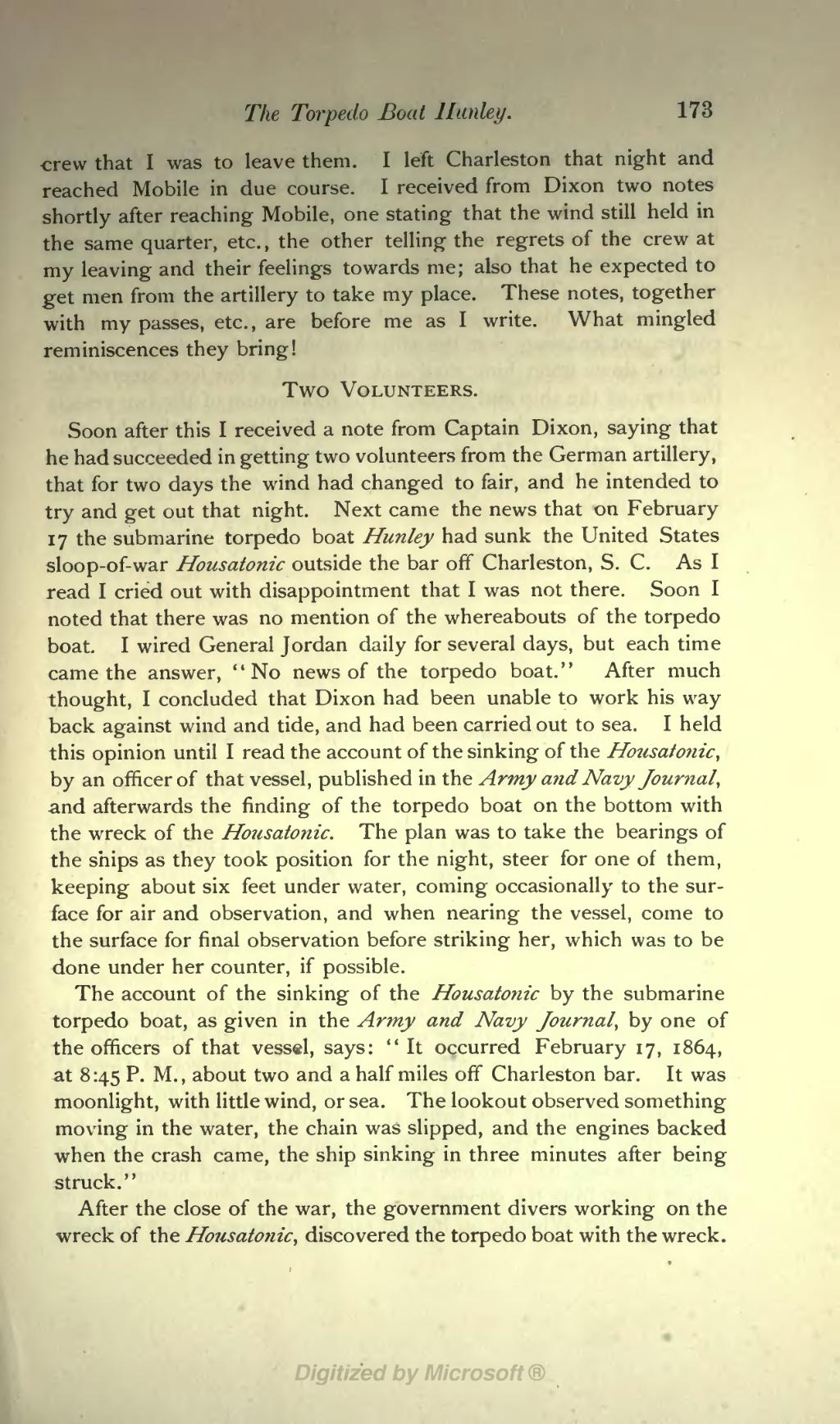The Torpedo Boat llanley. 173
crew that I was to leave them. I left Charleston that night and reached Mobile in due course. I received from Dixon two notes shortly after reaching Mobile, one stating that the wind still held in the same quarter, etc. , the other telling the regrets of the crew at my leaving and their feelings towards me; also that he expected to get men from the artillery to take my place. These notes, together with my passes, etc., are before me as I write. What mingled reminiscences they bring!
Two VOLUNTEERS.
Soon after this I received a note from Captain Dixon, saying that he had succeeded in getting two volunteers from the German artillery, that for two days the wind had changed to fair, and he intended to try and get out that night. Next came the news that on February 17 the submarine torpedo boat Hunley had sunk the United States sloop-of-war Housatonic outside the bar off Charleston, S. C. As I read I cried out with disappointment that I was not there. Soon I noted that there was no mention of the whereabouts of the torpedo boat. I wired General Jordan daily for several days, but each time came the answer, "No news of the torpedo boat." After much thought, I concluded that Dixon had been unable to work his way back against wind and tide, and had been carried out to sea. I held this opinion until I read the account of the sinking of the Housatonic, by an officer of that vessel, published in the Army and Navy Journal, and afterwards the finding of the torpedo boat on the bottom with the wreck of the Housatonic. The plan was to take the bearings of the ships as they took position for the night, steer for one of them, keeping about six feet under water, coming occasionally to the sur- face for air and observation, and when nearing the vessel, come to the surface for final observation before striking her, which was to be done under her counter, if possible.
The account of the sinking of the Housatonic by the submarine torpedo boat, as given in the Army and Navy Journal, by one of the officers of that vessel, says: "It occurred February 17, 1864, at 8:45 P. M., about two and a half miles off Charleston bar. It was moonlight, with little wind, or sea. The lookout observed something moving in the water, the chain was slipped, and the engines backed when the crash came, the ship sinking in three minutes after being struck."
After the close of the war, the government divers working on the wreck of the Housatonic, discovered the torpedo boat with the wreck.

